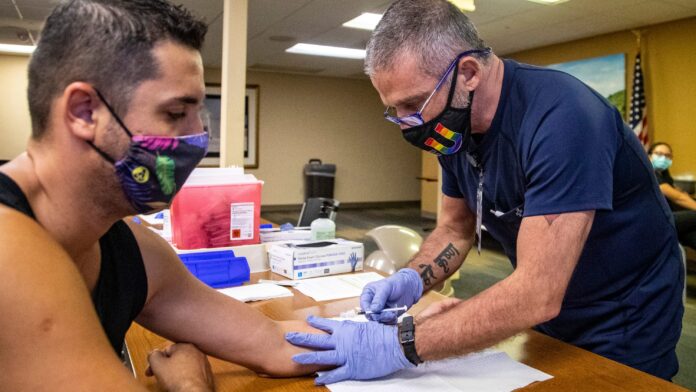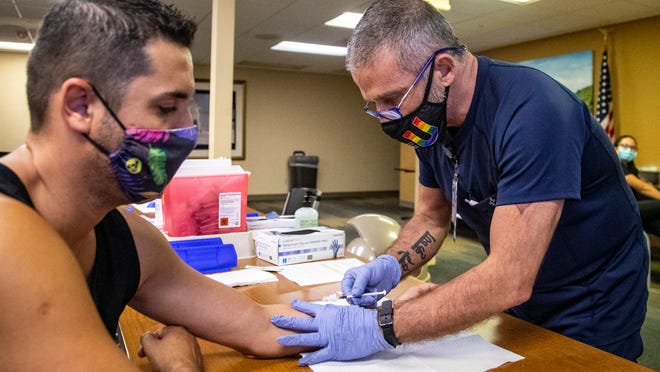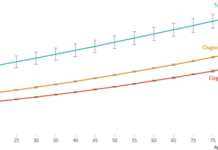New data from the Palm Springs wastewater treatment plant suggests that monkeypox concentration has fallen drastically in the city despite weeks of growing levels.
The latest data point on Sept. 5 shows monkeypox concentration in wastewater was below the limit of detection, “which is basically zero,” said Donn Uyeno, principal engineer for the City of Palm Springs.
“A trace amount of monkeypox virus was found, but because the amount was so small, the testing lab is not able to quantify it with any accuracy,” Uyeno said.
This comes after two consecutive weeks of increasing concentration levels. Data points show there were 4,118 viral copies per liter of wastewater on Aug. 15; 13,461 viral copies per liter of wastewater on Aug. 22; and 59,902 viral copies per liter of wastewater on Aug. 29. Between Aug. 15 and 29, there was a 1,355% increase in monkeypox concentration in wastewater.
Monkeypox is a disease caused by the monkeypox virus. People usually become infected through close contact with skin lesions or bodily fluids of infected animals or humans (alive or dead), including droplets, or clothing and linens from an infected person. The virus can also be spread through sexual contact, but it is not classified as a sexually transmitted infection.
Health officials say the Palm Springs area is at high risk given its large number of LGBTQ+ residents and tourists. The virus can infect anyone, but during the current U.S. outbreak, it has disproportionately affected men who have sex with men, a group that includes people who identify as gay, bisexual, transgender and nonbinary.
Uyeno said there is still not enough data available to determine how the next few weeks will look in Palm Springs. As of Tuesday, there have been 117 cases reported in the city since the beginning of the current outbreak, nearly half of Riverside County’s total of 244.
“I would recommend it is an indication to watch other data metrics closely,” Uyeno added. “For example, are the [initial] few weeks of data all just really low numbers? Or is it an early warning sign of the weeks to come?”
“There is so little data, it’s really hard to say. There are just too many assumptions,” Uyeno said. “The only accurate thing I can say is to pay attention.”
At the Valley Sanitary District in Indio, data shows there were 0 copies per gram of dry solid waste on the seven days samples were taken. However, the lab states that “there may still be very low amounts of the target present that are below the detection limits of the procedure.”
Wastewater has been a beneficial tool to track infectious diseases throughout history. It was used for polio in the 1940s, and wastewater surveillance in New York recently detected the virus again. Additionally, throughout the pandemic, wastewater reports showed spikes in COVID-19 cases often sooner than Riverside County Public Health’s testing results.
Riverside County Deputy Public Health Officer Dr. Jennifer Chevinsky said wastewater data is most helpful to inform trends overtime, rather than one point-in-time results.
“The lab that is processing the wastewater specimens continues to work to correlate the wastewater results with information about amount of circulating virus,” she said. “We anticipate that, like with any disease, there will be some cases that go unreported and that is taken into account as we continue our response activities.”
Chevinsky added that the county has expanded its testing network throughout the region, including testing options for those who may be uninsured or underinsured, to provide broader testing access and, in turn, increase case detection.
New monkeypox case numbers have started to decrease in some areas in the United States, and Riverside County Public Health is “closely monitoring the situation here locally,” Chevinsky said.
Riverside County Public Health reported an additional nine confirmed or probable monkeypox cases on Monday, and another 10 on Tuesday.
The cities in Riverside County with the most cases are Palm Springs (117), Cathedral City (33), Riverside (18), Desert Hot Springs (13), Corona (eight), Palm Desert and Moreno Valley (seven each), Rancho Mirage (six), and Indio and Perris (five each), according to the county’s monkeypox dashboard.
“We will continue to support vaccination and treatment efforts along with our community partners, as well as education initiatives to get information out about how to prevent spread of the virus in addition to resources regarding health monitoring and isolation,” Chevinsky said. “Working closely with the community, we anticipate that over the next few weeks we will be able to continue increasing vaccination and information on harm reduction strategies and therefore also continuing to increase knowledge and protection within the community.”
Anyone who believes they have been exposed to monkeypox should contact their health care provider.
LA County reports nation’s first monkeypox-related death
Los Angeles County health officials announced Monday that a resident has died from monkeypox, believed to be the first recorded U.S. fatality linked to the virus.
The Los Angeles County Department of Public Health announced the cause of death, and a spokesperson said it was confirmed by an autopsy. The patient was severely immunocompromised and had been hospitalized. The county didn’t disclose any other information for privacy purposes.
Eighteen people have died of the disease in other countries this year, the CDC reports, but the world’s largest monkeypox outbreak belongs to the United States, which has recorded almost 22,000 monkeypox cases so far this year.
Health officials are also investigating whether monkeypox contributed to the death of an immunocompromised Texas adult in August. That patient was also severely immunocompromised, the Texas Department of State Health Services said.
USA Today contributed to this report.
Ema Sasic covers entertainment and health in the Coachella Valley. Reach her at ema.sasic@desertsun.com or on Twitter @ema_sasic.









